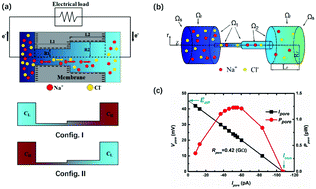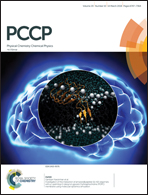Reverse electrodialysis in bilayer nanochannels: salinity gradient-driven power generation
Abstract
To evaluate the possibility of nano-fluidic reverse electrodialysis (RED) for salinity gradient energy harvesting, we consider the behavior of ion transportation in a bilayer cylindrical nanochannel consisting of different sized nanopores connecting two large reservoirs at different NaCl concentrations. Numerical simulations to illustrate the electrokinetic behavior at asymmetric sub-pore length and surface charge density are conducted, the impacts of which on transference number, osmotic current, diffusive voltage, maximum power and maximum power efficiency are systematically investigated. The results reveal that the transference number in Config. I (where high NaCl concentration is applied at the larger nanopore) is always larger than that in the opposite configuration (Config. II). At low concentration ratios, the osmotic current and maximum power have maximum values, while the maximum power efficiency decreases consistently. For Config. II, the ion transportation is impacted by the surface charge density at both sub-nanopores, while for Config. I, it is determined by the surface charge density at the downstream small nanopore. When large surface charge density is applied at the downstream small nanopore in contact with a very low concentration reservoir, there exists an interesting phenomenon: the larger surface charge density at the large nanopore induces a slight performance drop due to the impact of upstream EDL overlap.



 Please wait while we load your content...
Please wait while we load your content...